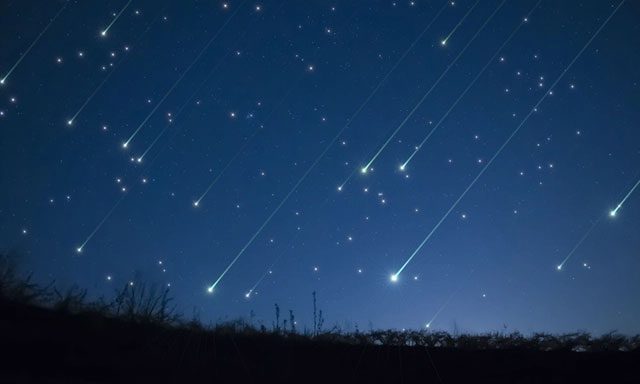The Eta Aquarid meteor shower will peak with up to 60 meteors per hour in May. Alongside this event, there will also be a New Moon and Mercury will be at its greatest western elongation.
According to the Hanoi Astronomy Society (HAS), May will host many fascinating astronomical phenomena worth observing, with the most notable being the Eta Aquarid meteor shower. Among all the visible celestial events in the night sky, meteor showers are among the most exciting. Standing beneath a starry sky late at night while the rest of the world sleeps, watching meteors streak across the sky is one of the most rewarding experiences in astronomical observation.
May 5-6 – Eta Aquarid Meteor Shower
The Eta Aquarid meteor shower is an above-average meteor shower, reaching up to 60 meteors per hour at its peak. Most meteors will be visible in the Southern Hemisphere, while in the Northern Hemisphere, the frequency will only reach about 30 meteors per hour. The Eta Aquarid meteor shower is formed from dust particles of Halley’s Comet – a celestial body known and observed since ancient times.

May will have a spectacular Eta Aquarid meteor shower.
The Eta Aquarid meteor shower typically occurs annually from April 29 to May 28, with this year’s peak on the night of May 5 into the early morning of May 6. The light from the nearly full moon will obscure nearly all meteors, except for the brightest trails. However, with patience, you may still catch a glimpse of a few beautiful meteors. It is best to observe from dark locations after midnight. The meteors tend to radiate from the constellation Aquarius but can appear from anywhere in the sky.
May 8 – New Moon
The moon will be on the same side of the Earth as the Sun and will not be visible in the night sky. This phase occurs at 10:23 PM (Vietnam time). This is the best time of the month to observe dim objects like galaxies and star clusters, as there will be no moonlight interference.
May 9 – Mercury at Greatest Western Elongation
Mercury will reach its greatest western elongation at 26.4 degrees from the Sun. This is the best time to observe Mercury, as it will be at its highest point above the horizon in the morning sky. Look for this planet low in the eastern sky just before sunrise.
May 23 – Full Moon
The moon will be on the opposite side of the Earth from the Sun, and its face will be fully illuminated. This phase occurs at 8:55 PM (Vietnam time). This full moon is referred to as the Flower Moon by some Native American tribes because it is the time of year when many spring flowers bloom. It is also known as the Corn Moon and Milk Moon.


















































